20 days in Dhamma Dvara, Germany
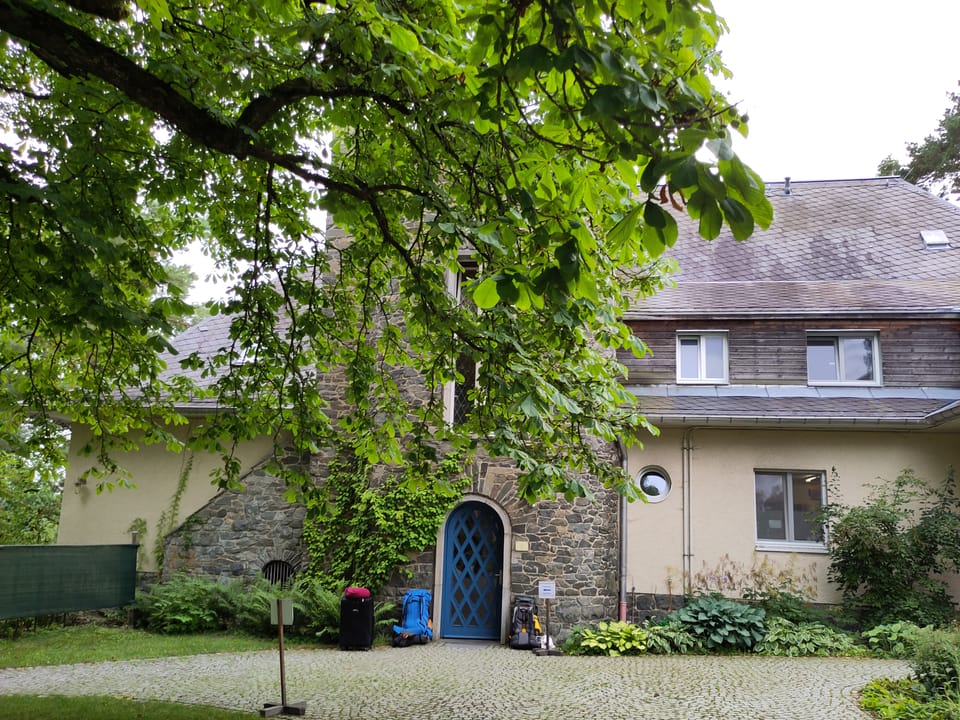
The Journey
2025 had been a challenging year. In summary, I moved to 16 different homes and hotels, conducted 10 focus group discussions, travelled to 5 countries on three continents, developed and facilitated four workshops and team-building sessions, presented at three conferences, lost two friendships, and was robbed. I was running on adrenaline, and I did not have a chance to stop.
My stress and anxiety levels remained high as I journeyed to Dhamma Dvara. I took an early morning flight from Lisbon to Nuremberg via Amsterdam. The flight was delayed, and so was the train from Nuremberg to Hof. I missed the 430 pm shuttle. Thankfully, I managed to catch the last taxi at 6 pm. For months, my adrenaline had been running high. I was hyper-vigilant, yet exhausted. My greatest hope was that the 20 days would help me reset and restart my life in Lisbon.
The Requirements
My journey to the 20-day course started 2 years ago, in 2023. After completing the 8-day Satipatthana course in Dhamma Sacca, I found out that I was nearly eligible to attend the 20-day course. The requirements were to:
- complete five 10-day courses
- complete one Satipatthana course
- serve at one 10-day course
- meditate one hour in the morning and evening every day for two years
- adhere to the five precepts daily for two years
- obtain a recommendation from an assistant teacher
At that time, I didn't meet the daily requirement of 2 hours of meditation, and I wasn't sure if I had practised the five precepts daily either. Just like me, meditation friend, Marina, was also almost eligible to attend the 20-day course. And so, we promised each other to attend the 20-day course together in August 2025.
If it weren't for this promise, I wouldn't have been so determined and steadfast in meeting these requirements. I probably wouldn't have considered attending a long course. I am fortunate to have this support along the Dhamma path.
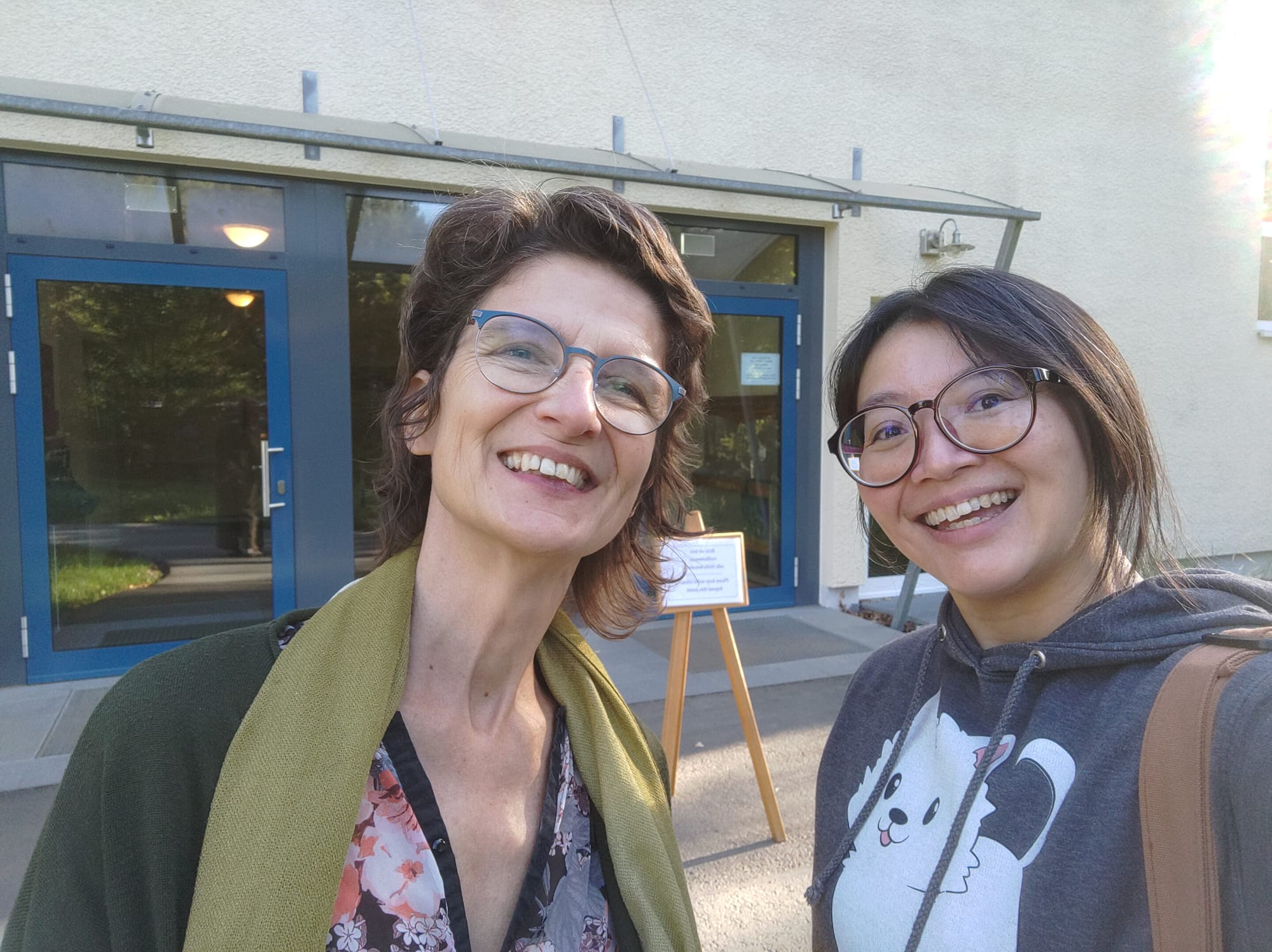
Daily Life
F2 Haus
I arrived at Dhama Dvara on Day -1, 2 August 2025, which was also my brother's birthday. F2 Haus appeared to be a former storage facility that had been converted into a 5-bed dormitory, where curtains and movable wooden dividers separated the beds. Initially, the room was assigned to me and another student. Since two students in the adjacent F1 Haus were absent, my roommate moved to F1 Haus. We both could have our own rooms.
There are no bathrooms in this building. We were assigned showers in a small cottage across a small grassy area. This small cottage was converted into an industrial-sized laundry house that also housed a massive hot water tank, which served the entire centre. Since I was the only person in my dorm room, I had the showers all to myself, too.
F2 Haus was too large, and it felt like I was sleeping in the open. I created a small nook in the corner of the room by moving the wooden dividers, my temporary home for the next 20 days.
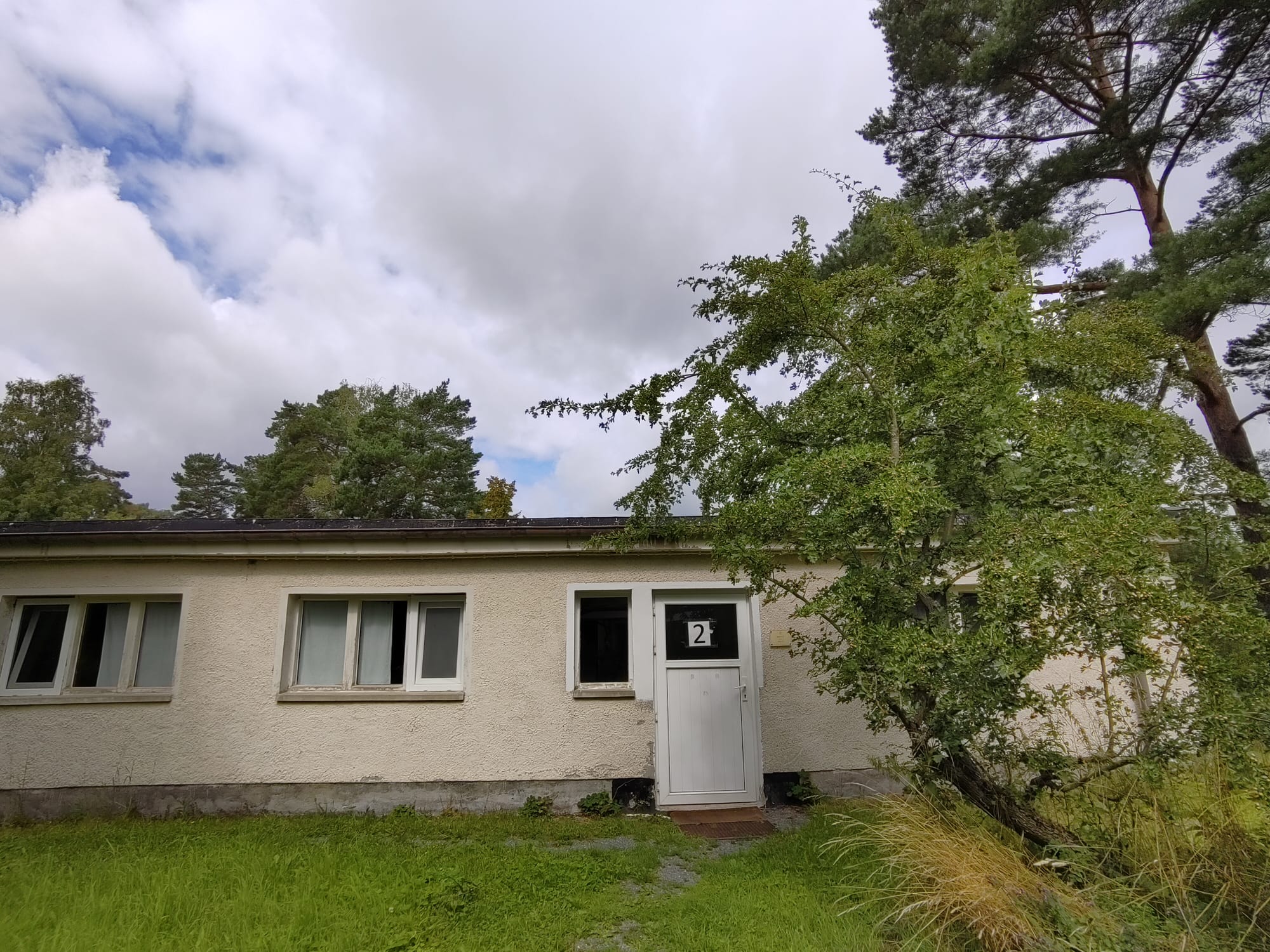
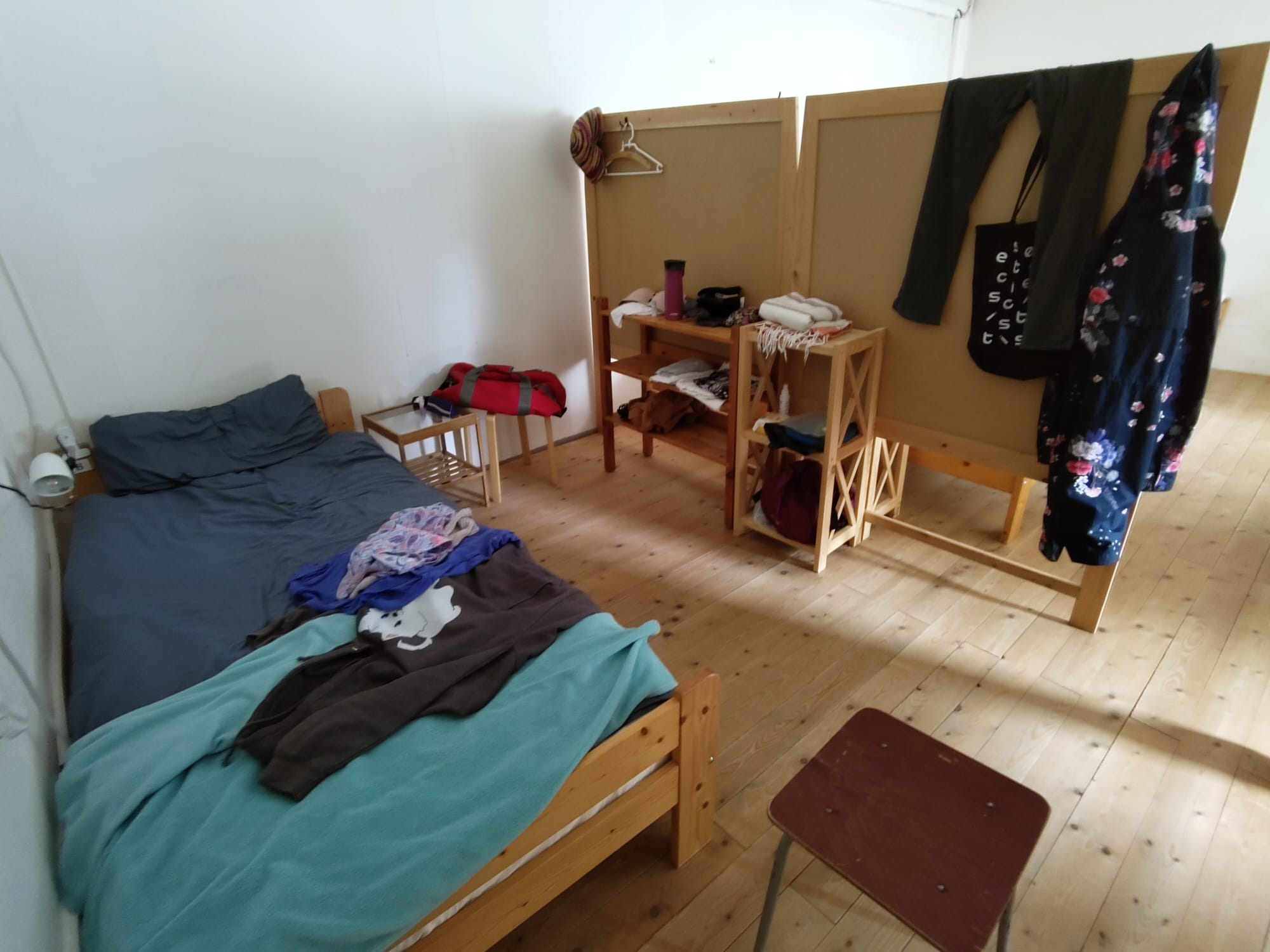
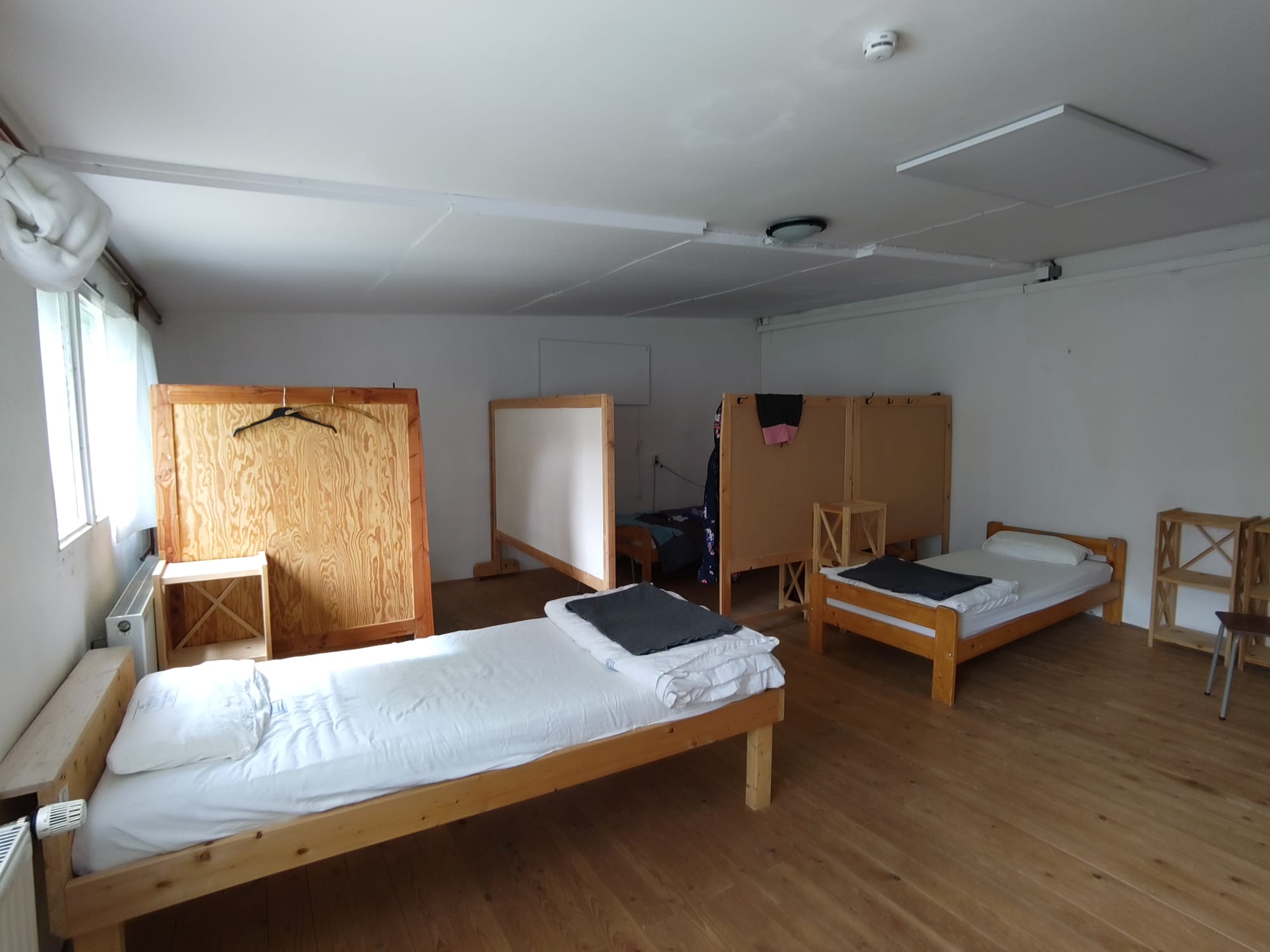
Daily Schedule
There were only two mandatory sessions each day: the group sitting at 6 pm, followed by the evening discourses. For the rest of the day, we were free to meditate in the hall, our designated cells, or in our rooms. The management posted the daily schedule in the dining hall, which I decided to follow anyway. Every day, I'd join the group sitting in the meditation hall. All other times, I meditated in my cell. In the last hour of the day, I'd meditate in my room, making it convenient to go straight into bed.
4:00: Morning bell rings
4:30-6:30: Meditation in the hall with morning chanting
6:30-8:00: Breakfast and rest
8:00-9:00: Group sitting
9:00-11:00: Meditate
11:00-13:00: Lunch and rest
13:00-14:30: Meditate
14:30-15:30: Group sitting
15:30-17:00: Meditate
17:00-18:00: Afternoon tea and rest
18:00-19:00: Mandatory group sitting
19:00-20:00: Evening discourse
20:00-21:00: Meditate
21:00-21:30: Rest
21:30: Lights off
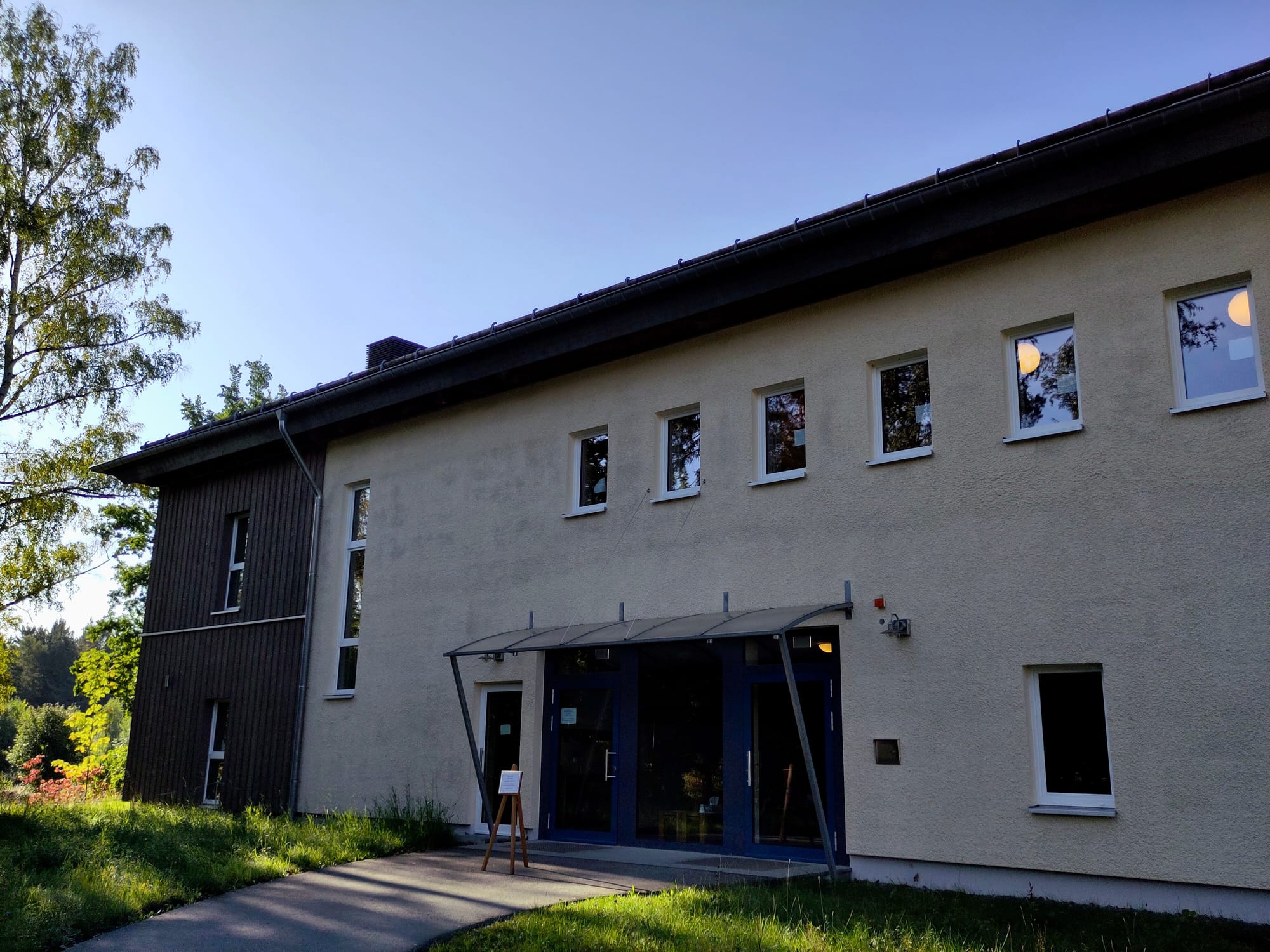
Meals
For breakfast, the servers prepared oats and a sweet compote of dates and raisins. Down the line, there was a large basket of fruits, consisting of bananas, apples, oranges, and peaches. The apples were grown at the centre. To cut the fruits, small chopping boards were prepared. This was followed by a large bowl of yoghurt and containers filled with various toppings, such as gomasio, sesame seeds, flax seeds, coconut flakes and such.
On another table, there were four choices of German breads along with various jars of spreads. I'd usually go for the peanut butter, honey, tahini, and the homemade jams.
The lunch menu varied every day. There was usually rice, potatoes or quinoa, a vegetable dish and a tofu dish. The cutting boards would be replaced with an array of salads and three dressings. My favourite was the joyghurt, a yoghurt dressing with herbs. The bread table remained, with the same extensive offering of spreads.
Since we're not allowed to eat after 12 pm, ginger tea was prepared for our afternoon tea. A bottle of lemon juice and a black, sweet, and sticky syrup called Goldsaft were ready to be added to the ginger tea.
The Practice
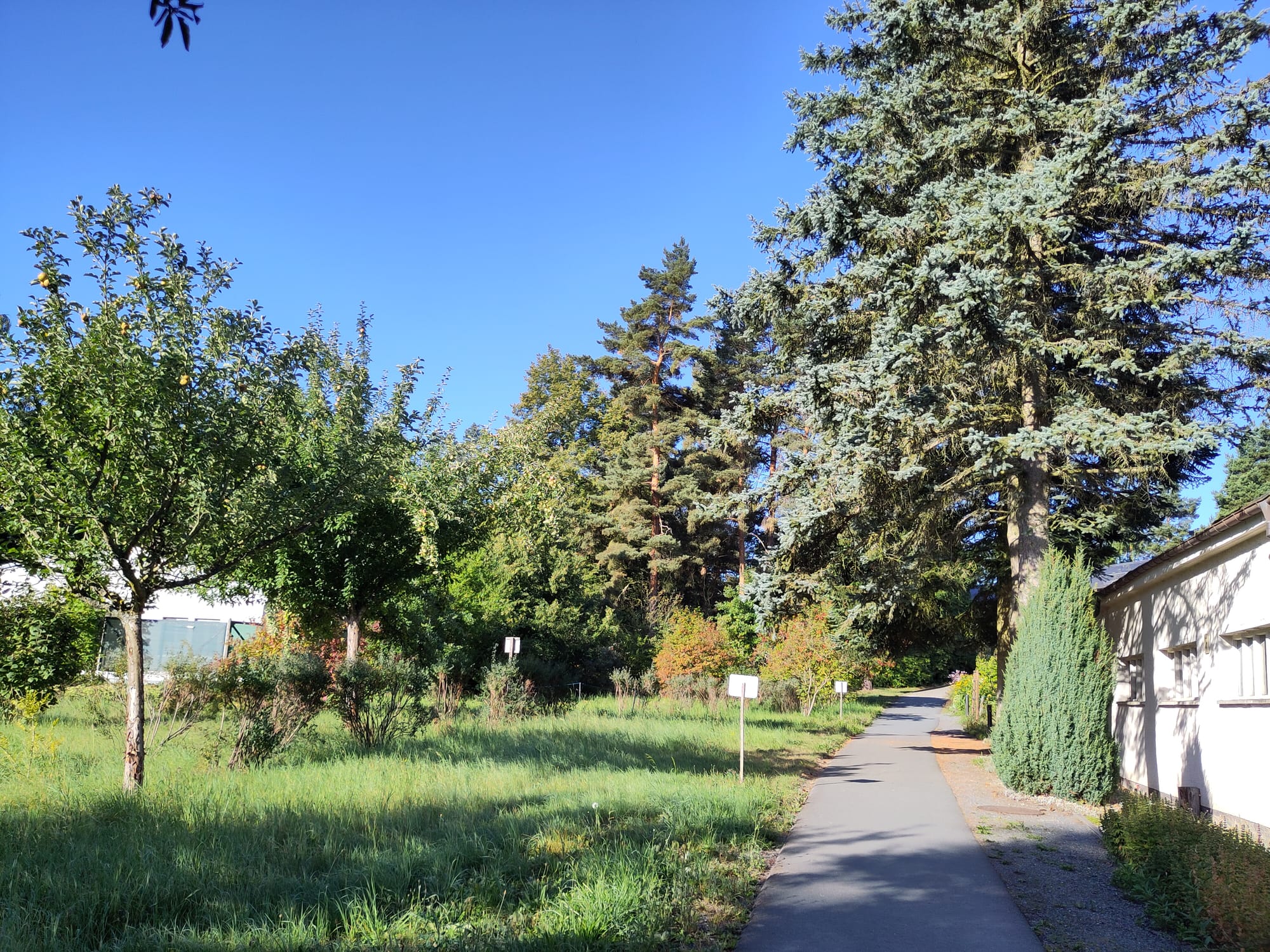
Noble Silence
Throughout the course, we were expected to practice Noble Silence. This meant no verbal or nonverbal communication with anyone, either inside or outside the course. The only exception was with the course manager or assistant teacher. If we needed to communicate, we could only express what was necessary.
Anapana, Vipassana & Metta
As with the 10-day course, the 20-day course consisted of three types of meditation. For the first 7 days, we practised Anapana, which involves focusing our attention on the natural breath and sensations in the area below the nostrils and above the upper lip. For the next 12 days, from day 8 to day 19, we practised Vipassana, which involves being aware of our body sensations while remaining equanimous. On the last day, we practised Metta, which consists of asking for forgiveness for causing harm to others, expressing gratitude, and sharing our dhamma and merits with all beings.
Sampajañña & Downcast Eyes
The 20-day course differed from the 10-day course such that meditators were expected to practice Sampajañña, which involves continuously being aware of body sensations and remaining equanimous. Regardless of whether we were walking, eating, bathing, or resting, we were instructed to practice Vipassana in all activities throughout the day.
To help our minds focus on the sensations, we were instructed to keep our eyes downcast. Wherever we went, whatever we did, we kept our eyes looking downwards and not more than a few feet in front of us. Downcast eyes were an interesting view and experience. I saw only gravel, grass, or tar, but not the sky, the sun, or the path ahead. I learned how to recognise other meditators by their shoes. I learned to recognise the sound of aeroplanes and the cold winds gushing above the centre grounds.
The Wandering Mind
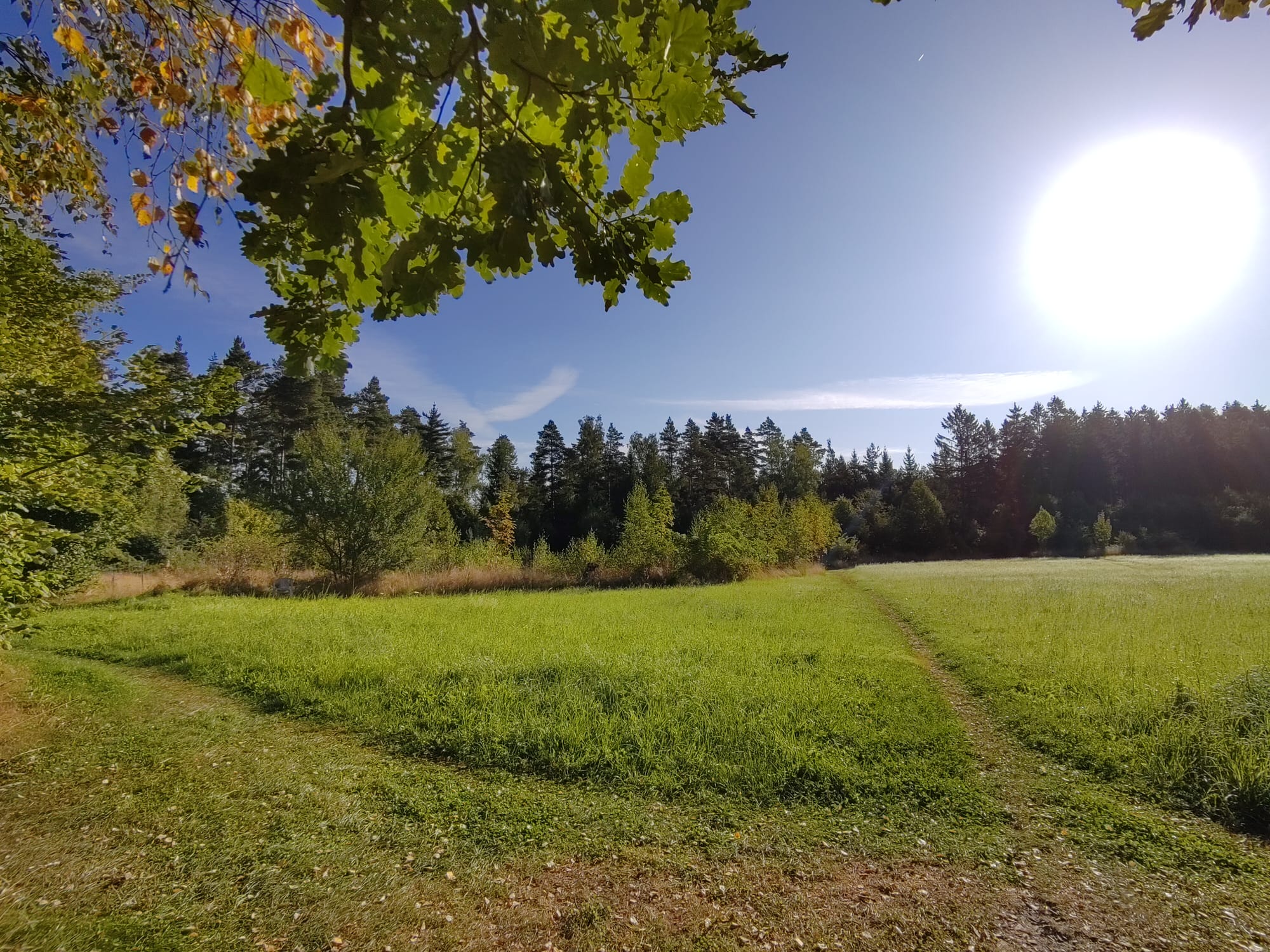
Please Note...
...that these are my subjective experiences of the practice. No one has the same experiences. Most importantly, I'm not a meditation teacher. So, what I share here should not be considered a benchmark or guidance for your practice. Please reach out to your Assistant Teacher if you need further guidance.
Emotional Storms
Almost everyone I know who has previously attended a 20-day course spoke about facing emotional storms. Every year, since forever, I have been presented with different challenges, both personally and professionally, that in everyday life would have triggered an emotional storm. I knew I would face them, and I was prepared.
The emotional storms did not arrive.
There were a few rain showers, but they dissipated quickly. The mind brought up memories of my past challenges. However, because I had worked through them in my daily practice, I knew how to handle these memories and their associated reactions. They were nothing new to me.
Instead of emotional storms, the course showed me how much I had progressed on the path with my daily practice and in following the precepts.
Pañca Nīvaraṇa (Five Hindrances)
As expected, my mind kept wandering. By nature, the mind tends to resist and refuse to observe respiration and sensations. Within the first few days of Anapana, it was the first time I recognised the five hindrances, or pañca nīvaraṇa. The hindrances are obstacles that hinder progress in one's meditation. These consist of craving, aversion and ill-will; restlessness and worry; sloth and torpor; as well as doubt about the practice and one's abilities.
After many years of practice, these hindrances became clearer to me. And it was easier for me to gently nudge my mind back to observing respiration and sensation, and faster than before.
Usually, my wandering mind would take me on journeys to the regretful past, the fearful future, or lead me down the confusing maze of illusions and delusions. My mind sang songs, experimented with recipes, replayed memories of trauma, revisited my childhood, made decisions on current projects, wrote sections of my thesis, made speeches, scolded those who had harmed me, cried for those who had left me, and sometimes slept.
The mind doesn't want to meditate.
For its survival, the mind requires the continuous reactions of matter, allowing it to remain in the endless cycles of birth and rebirth. When there are no more reactions, the mind becomes calmer until it can no longer exist. Without the reaction of matter, suffering ceases —that is enlightenment.
Making Sense
Even though my focus was supposed to be on my respiration and sensations, some thoughts that arose, unrelated to Vipassana, were helpful and wise.
Karma of a Chinese Woman in Malaysia and the West
For one, I've accepted that I'm a Chinese woman, born in a country with racial discrimination deeply embedded in the policies, systems, and culture of its people. It is improbable that I will live to see my birth country achieve racial equality. Also, I'm primarily based in Western society, where there are people, not many, who carry Anti-Asian sentiment in their hearts, and this group of people are growing by the day. While society has made much social progress, I can not escape those who discriminate, look down on, overlook, or even hate me because of my ethnicity.
Realities of a Migrant Woman
This challenging year has made me realise the harsh realities of being a migrant, alone in a country and on a continent. Should anything happen to me, more dangerous than the robbery, I have NO ONE to look after me. For example, in Portugal, if I were to be hospitalised for any reason, I'd have a handful of friends who might drop by for a visit, engage in small talk, and perhaps bring flowers or food that better suits my taste and diet. After being discharged from the hospital, I'd end up taking a Bolt home, settling the insurance, and managing my daily tasks of cooking, cleaning, and bathing, all on my own.
If it were in Malaysia, I'd have someone to accompany me at all possible visiting hours, negotiate with the doctors for the best treatment, scold the nurses who may neglect or mistreat me, and, of course, bring flowers and foods that suit my taste and diet. Coming out of the hospital, I'd have family or friends who would drive me home, settle my insurance, and someone to cook or buy my meals, as well as clean the house. However, I'd prefer to bathe on my own.
Considering these two scenarios, being a migrant abroad and away from loved ones is indeed a tough life.
Purpose Before Location
Another thought that frequently appeared was that I had become more open to future possibilities, which included leaving Portugal and perhaps returning to Malaysia. Initially, I wanted to grow roots in Portugal; buy a house and make Lisbon my base. Due to this challenging year, my mind and heart have changed. Instead, it would be best for me to move to places where I could fulfil my life's purpose, even for a short time.
If I'm going through a period where my career is a priority, I should be in an environment that allows me to do my best work. Or, if I'm in a phase of life where my family needs support, it would be best for me to relocate closer to them.
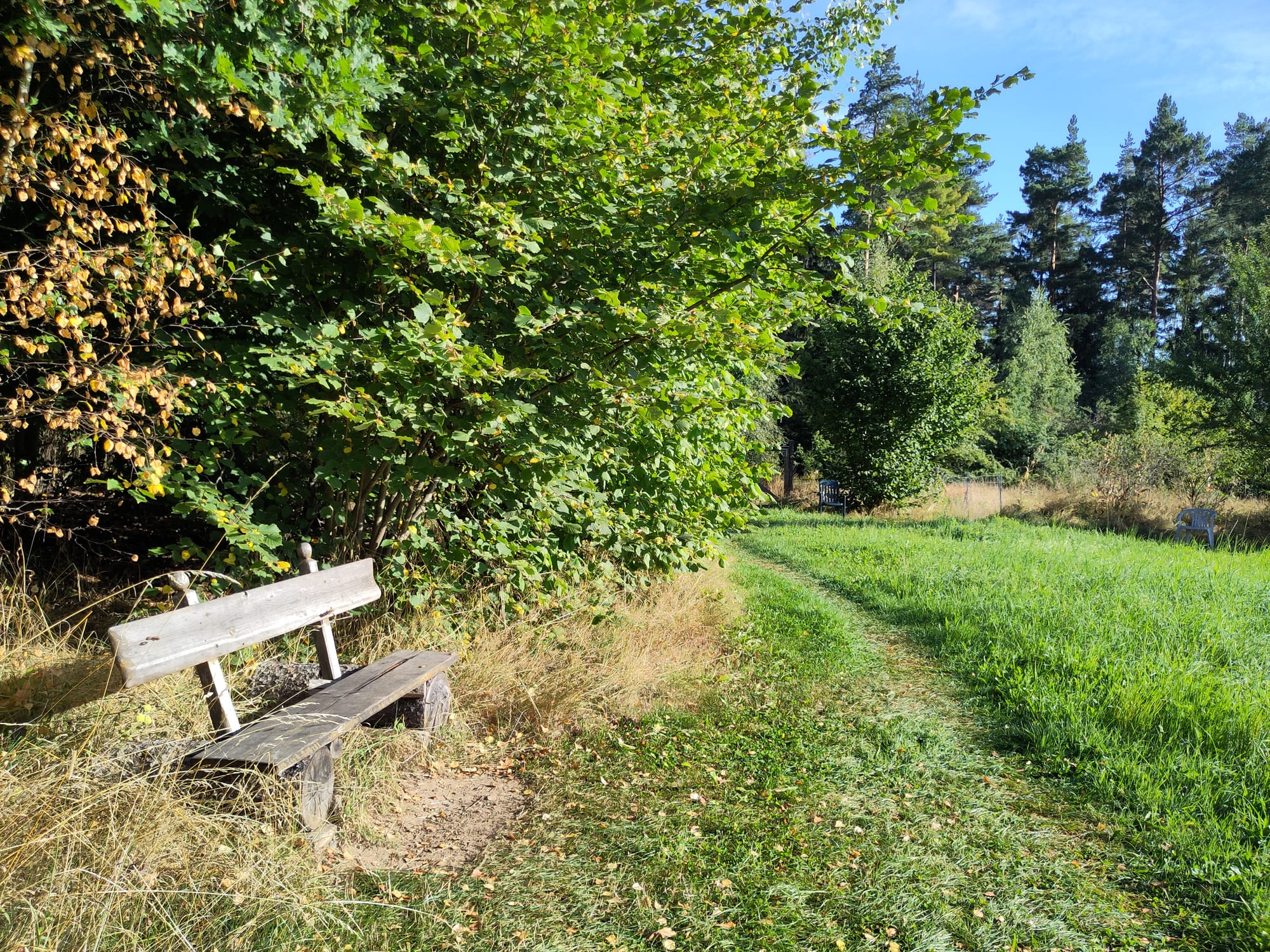
Making Progress
In 2023, I sat my first Satipathana course at Dhamma Sacca, Avíla, Spain. During that course, my mind was able to accept pain as a gross sensation, without the attached aversion. Since then, I have rarely experienced gross sensations in my daily practice. The gross sensations did appear during the first 3 days of Vipassana. After which, most of my sensations were of agitation and craving.
Torpor had been my biggest enemy since the start of my practice in 2011. I struggled to wake up at 4 am, often dragging my sleepy head to the meditation hall for the morning chants, only to fall asleep in the sitting position. This struggle persisted over the years, and I accepted it as a hindrance that I could never overcome.
This time it was different.
Torpor disappeared from the fifth day onwards, and it had not yet returned. Instead, my sengkharas (or also known as karmas)—the accumulation of mental habits over lifetimes —appeared subconsciously in my dreams. Every night, I'd have vivid and paralysing dreams of people I knew and those I've never met, places I've never been, and situations that were both familiar and unfamiliar. However, these dreams became less paralysing with each passing day. In the last two days, I was able to wake up without needing an additional alarm clock.
The Best Advice
Usually, I wouldn't bother making an appointment with the assistant teacher (AT) because I'm unsure of what to ask. This time, I took advantage of this. I mainly asked about the technique. I wanted to ask about my daily practice, but the AT asked me to hold onto it until the end, as the evening discourse might provide me with answers, which it did.
There was one piece of advice that the AT gave, which stuck with me throughout the course...
When you are aware of your sensations, you are in the present. Observe Anicca.
Anicca means impermanence. I had not previously perceived sensations as an anchor to the present moment. Then Goenka's words kept repeating in my head.
Constantly aware, aware of the reality of this moment as it has manifested itself. From moment to moment, from moment to moment. Keep on developing the wisdom of the understanding of the law of impermanence. And remain equanimous with the understanding of Anicca. Anicca. Annica.
As I practised Sampajañña, I made serious attempts to keep my attention focused on the sensations and observing impermanence for as long as possible. I managed to stay focused for more than 5 minutes, but less than 10, I think. It was hard to tell without a watch.
Next course...
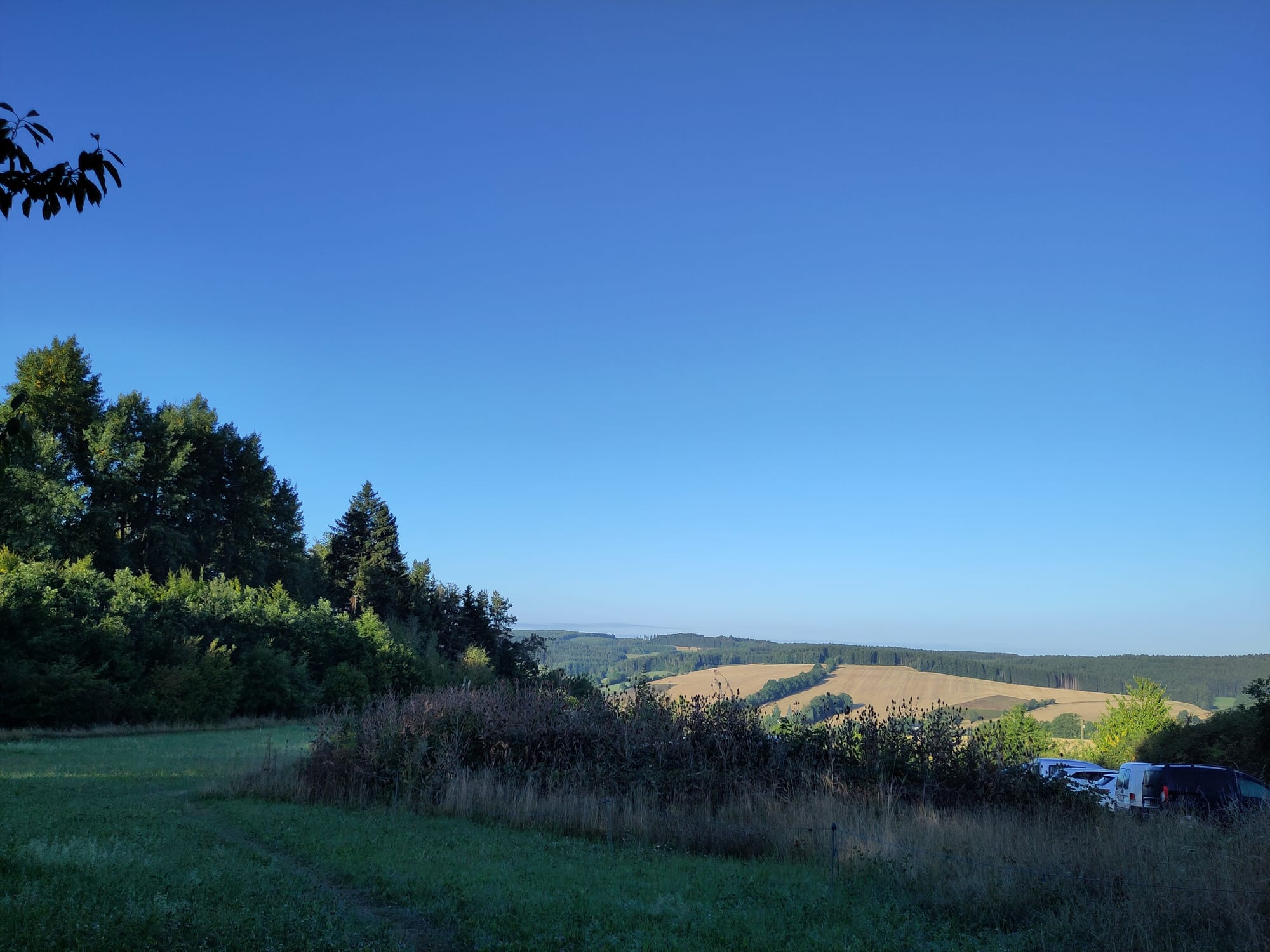
The 20-day course was not as difficult as I had anticipated to be. In fact, I would haved like to stay longer. One day, I will progress to longer courses, such as the 30-day, 45-day, and possibly the 60-day course.
The 20-day course had convinced me that this is the only path to full liberation. The only way to attain enlightenment. While it is a paradox to "desire" enlightenment, deep down, I don't want to go through the cycles of birth and rebirth anymore. I have had enough suffering, and I want out.
And so, I'll try my best to continue this practice as instructed by Goenka, which involves adhering to the five precepts and practising for an hour in the morning and evening. It may take many lifetimes, but I sensed that I have been on this journey before.
Next year, I would like to sit a 10-day course and follow it with serving on another 10-day course. We shall see.

Member discussion